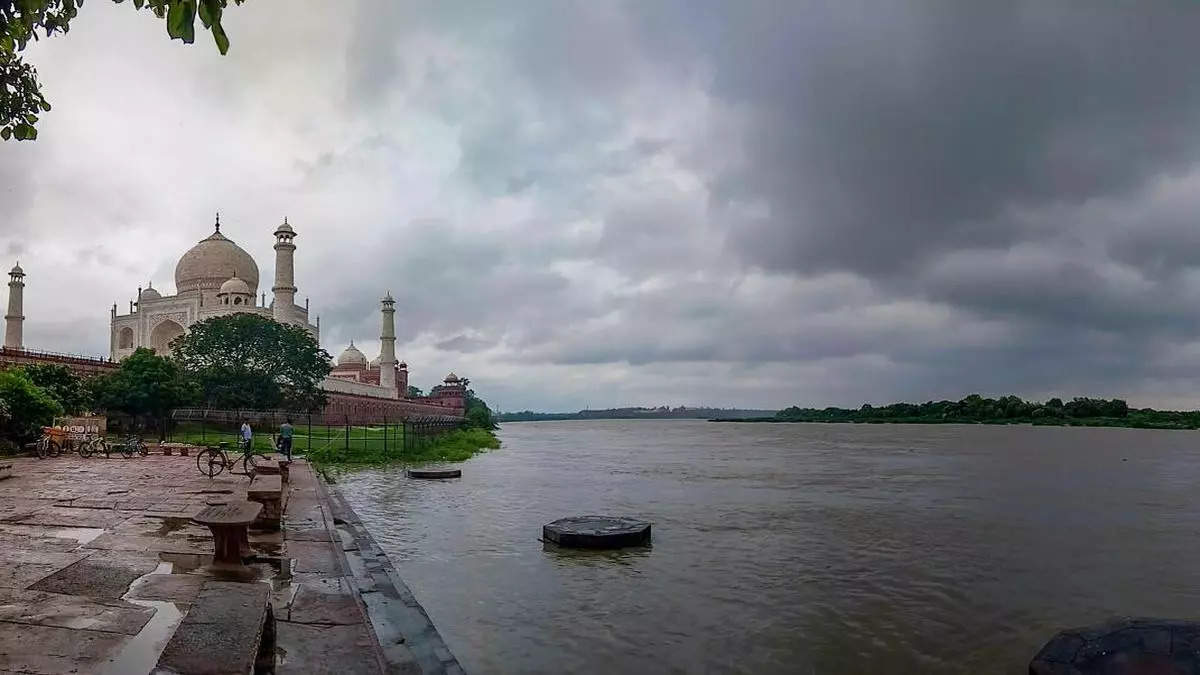Yamuna levels are dropping in Delhi; experts are looking for flood forecasts

New Delhi: Due to rain in catchment areas upstream of the national capital, the Yamuna River's water level in Delhi slightly increased on Monday but decreased on Tuesday. At 8 p.m. on Tuesday, the water level had fallen below the 205.33-meter danger line, according to data from the Central Water Commission. Over the past two days, the Hathnikund Barrage in Haryana's Yamunanagar has been losing water, and a further fall is anticipated.
Arvind Kejriwal, the chief minister, announced in a tweet on Tuesday morning that the Wazirabad water treatment facility had also started operating at full capacity after operations were hampered by the flooding of a pump house.
According to a representative of Delhi Jal Board (DJB), the city's water supply is almost normal. Only 10 to 12 million gallons of water per day (MGD) are in short supply, according to him, because some tube wells in Palla's river floodplains have been flooded.
Experts recommend a mechanism for flood forecasting in the interim to stop flooding in the future.
The Yamuna and its tributaries and distributaries, particularly those near bridges, canals, and brooks, may be easily de-silted. The government should instead look into ways to create room for the river to spread "the RMSI SVP for Sustainability, Pushpendra Johari, said. Moreover, a flood forecasting system must be put in place to keep track of the flood situation because Delhi is also prone to urban flooding "Johari threw in.
As it is susceptible to both floods and earthquakes, Delhi has not yet completed a multi-hazard risk assessment study, in contrast to other big cities that have done so. According to Johari, such a study will produce the required data points to support risk reduction and growth planning in Delhi.
In India, 66% of the population is at risk from severe flooding. Due to the availability, usability, and efficacy of early warning systems and impact-based, people-centered, end-to-end multihazard early warning systems, 14 out of 32 states and Union territories that are vulnerable to flooding have high levels of resilience.
According to a recent assessment by the Council on Energy, Environment, and Water (CEEW), just 25% of the susceptible districts in India have level flood forecasting stations, despite the fact that 72% of these districts are vulnerable to major flood events.
After reaching its highest point on Thursday at 208.66 metres, the river has been steadily receding. But, due to rain in the upper reaches, a slight change in the water level cannot be excluded out. Wazirabad, Chandrawal, and Okhla water treatment facilities (WTPs) operations were hampered as a result of the swelling Yamuna, which resulted in a 25% decrease in water supply.
Chandrawal and the Okhla WTP both started operations on Friday. On Tuesday, Kejriwal stated in a tweet. ITO is one of the areas in the city that has been dealing with waterlogging and flooding problems for the past week. On July 8 and 9, a downpour initially caused severe waterlogging because the city received 125% of its monthly rainfall allotment in just two days.
On Thursday, the river reached 208.66 metres, breaking the previous record of 207.49 metres set in September 1978.
Almost 26,000 people have had their lives affected by the flood after being forced to leave their houses. Millions of rupees have been lost in terms of property, businesses, and incomes.
.png)